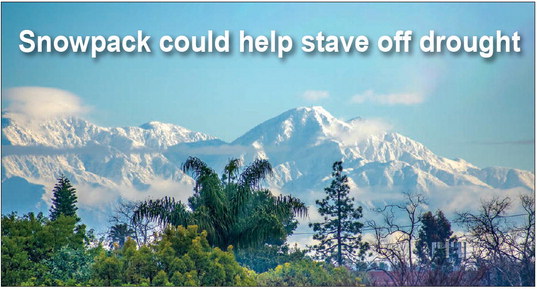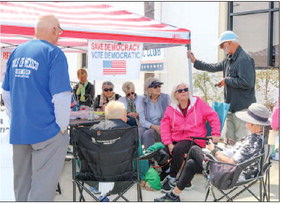Snowpack could help stave off drought


by Emma DiMaggio
Communications Manager
After the February deluge that downed trees and flooded streets, Southland residents were rewarded with a scenic view: the glistening San Gabriel Mountains, painted in white after nearly 10 inches of snowfall in some areas.
Near the coast, Long Beach got a whopping 10.05 inches of rain in just a few days. In an average year, the city gets 12.02 inches of rain, according to a 30-year average based on National Weather Service data.
Colossal amounts of rain fell across Los Angeles County, with 14.25 inches in downtown and over a foot in Bel Air, Topanga Canyon and Woodland Hills. By Feb. 7, crews had responded to 520 mudslides across Los Angeles, according to the mayor’s office, prompting evacuation orders in some places.
The atmospheric river that pummeled coastal regions also left powdery snow at elevations as low as 3,000 feet.
As LW residents surveyed their soggy lawns, mountain communities geared up to shovel snow—a welcome sight for state water officials, who recorded snowpack at 52% of average levels at the end of January.
Under the right conditions, the snowpack is a crucial water source for the state’s reservoirs, which are currently at 118% of their average levels, according to California Water Watch. Just two years ago, nearly 95% of the state was classified as under severe drought conditions.
Mountain snowpack can provide as much as a third of California’s water supply by accumulating snow during wet winters and releasing it slowly during dry springs and summers.
This snowpack can be beneficial in staving off drought conditions for longer periods of time.
During El Niño years, California’s coast often faces severe winter storms with high levels of precipitation. Though these wet months also come with snow, rising temperatures threaten the longevity of that snowpack.
Experts say it’s too early in the season to determine whether California will be able to stave off drought. During the storm, nearly 7 billion gallons of storm water from Los Angeles County was captured for groundwater and local supplies, according to the mayor’s office, and weather models hint at wet conditions on the way.



